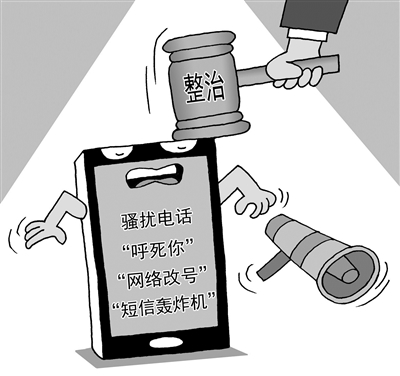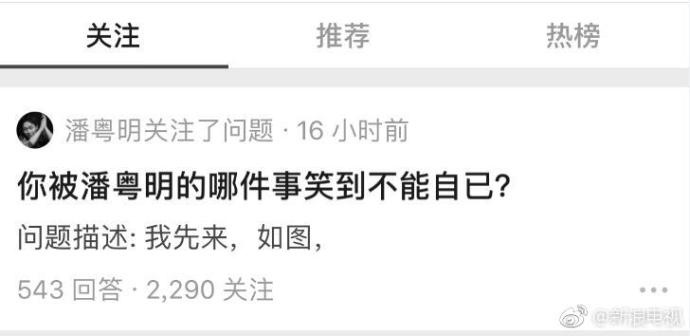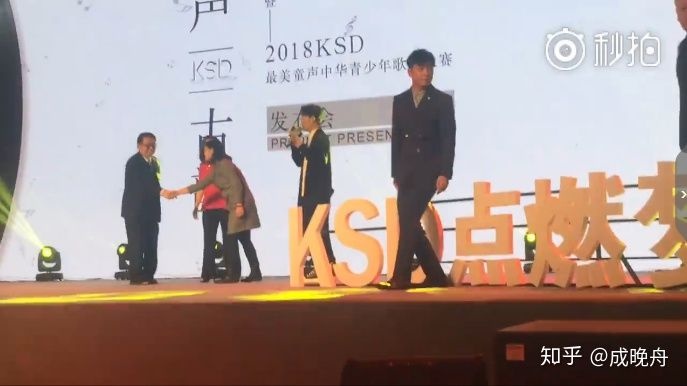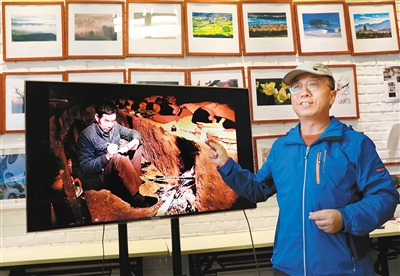

Recently, many users have frequently received harassing calls with numbers beginning with "95", including promoting loans, real estate and other different contents. Some users said that they had received more than 20 harassing calls beginning with "95" a day.
On May 6th, a reporter from Beijing Youth Daily found that several companies can provide the service of applying for a 95-code telephone number, and the price ranges from 40,000 yuan to 60,000 yuan. There are also companies that can help enterprises meet the conditions for applying for number 95, "just give money."
In response to repeated harassing calls, the Ministry of Industry and Information Technology has jointly issued the "Special Action Plan for Comprehensive Remediation of Harassment Calls" with 13 departments. It is necessary to jointly rectify the harassing phone industry chain from July 2018 to December 2019, and classify and publicize it regularly. The three major operators also said recently that according to the relevant regulations of the state, no organization or individual may make commercial marketing calls to users without the consent of users. Lawyers said that making harassing phone calls is suspected of violating relevant laws and regulations, knowing that buyers use harassing phone calls for illegal and criminal activities, and still providing agency services, violating the special action plan for comprehensive rectification of harassing phone calls. In serious cases, they may be identified as accomplices in criminal acts.
find
Receive more than 20 harassing calls a day.
Most numbers begin with 95.
Recently, many users reported that they received many harassing calls, which are different from the previous numbers that started with 400. Recently, most harassing calls started with 95, and most of them were 8 digits.
On the 6th, Mr. Tian told the reporter of Beiqing Daily that on May 5th alone, he received more than 20 harassing calls starting with "95". On weekdays, such calls are sometimes more or less, and the calls are basically to promote shops, insurance and loan services. Another user, Mr. Hu, said that he received several harassing calls every day, including 10 one day. Later, he set up call interception, and the situation was slightly better.
Mr. Jiang told the reporter of Beiqing Daily that he has always received harassing calls from numbers beginning with 95 recently. Some of the sales calls are real-life voices, and some sound like intelligent voices. "There is no problem with attitude, but it is a bit annoying to play every day." Mr. Jiang said that he also tried to open the interception service. "But the software can only remind you that it is a harassing call, and it cannot be completely intercepted. If the interception service is opened, it is possible that normal calls will also be intercepted."
According to the screenshots of harassing calls provided by users, the reporter of Beiqing Daily saw that most of the calls started with 9520 and 9521, which were generally 8 digits. When reporters called these numbers, they were all reminded that they were empty or could not be connected.
survey
Many companies provide 95-yard agency.
Say "you can do it if you have money"
The reporter of Beiqing Daily inquired that there are many companies that can provide 95 number application service. On the 6th, the reporter randomly consulted a company. Ms. Li, a staff member, said that to apply for a 95-yard telephone, the company needs a call center license, with a registered capital of more than 10 million yuan, and requires Chinese-funded enterprises and three people to pay social security fees for nearly three months.
Ms. Li said that at present, the 95-code number applied for is mainly 952, and 953 and 955 can only be applied for special positions. The number can be 6 to 8 digits, and the 8-digit number is the expansion number. In terms of price, Ms. Li said that the agent call center license is 10,000 yuan, and the application number is 50,000 yuan or 80,000 yuan. "The price is determined according to the speed of the application number." Ms. Li said that there is no limit to the number of calls, and the system can be purchased separately, and voice can be played instead of manual dialing. "This company can also help introduce."
Another company employee, Mr. Sun, who can provide 95-yard application service, said that if the opening conditions are not met, the company can help the agency. "For example, if the subscribed capital reaches more than 10 million yuan, you can go to the industrial and commercial department to increase capital. The business license should be increased in the later period ‘ Value-added telecom service ’ The project, can help to deal with. There is also a social security certificate, and the company can also help. " Mr. Sun said, "Basically, you can do it as long as you give money."
Mr. Sun revealed to the reporter of Beiqing Daily that there is no limit to the number of outgoing calls with 95 yards, but it is best that the number of incoming calls is directly proportional to the number of outgoing calls. However, Mr. Sun also said that many companies that buy or rent 95 yards have one purpose, that is, to promote sales. "Even if they are marked as harassing calls, they can be dealt with later, and it is enough to spend some money to cancel them."
The staff of another company said that enterprises can also choose to "link" to the name of a company with a 95-yard number, and the 6-digit 95-yard number can be expanded to 8 digits. After renting the expanded number, enterprises can make telephone sales to various places.
Another person in the industry said that because many banks’ customer service numbers start with 95, and some enterprises’ customer service numbers are also six-digit numbers starting with 95, many companies have recently bought 95-yard numbers for the purpose of promotion, on the one hand, because the numbers are short, on the other hand, they hope to be "a sham as a pearl" to achieve the purpose of letting users answer and carry out marketing.
govern
Ministry of Industry and Information Technology Joint Multi-department Special Action
Who is in charge of access?
Regarding the management of harassing calls, the reporter of Beiqing Daily noticed that in July last year, thirteen departments jointly issued the "Special Action Plan for Comprehensive Remediation of Harassment Calls" and decided to organize a one-and-a-half-year comprehensive rectification of harassing calls nationwide from July 2018. It is clear in the plan that in order to strengthen the management of voice lines and code number resources, all basic telecommunications enterprises should strictly examine the user qualifications of voice lines and code number resources such as "95", "96" and "400" in accordance with the principle of "whoever accesses them", standardize the use of resources, fully grasp the information such as users, access locations, resource uses, calling numbers allowed to be transmitted, and regularly check voice relay and Internet private line access to prevent illegal use. At the same time, it is necessary to strengthen the contract constraints of telephone users, comprehensively standardize the marketing outbound business and comprehensively clean up all kinds of harassing software.
In addition, according to the information on the website of the Ministry of Industry and Information Technology, many places in the country have also managed harassing calls. At the beginning of this year, Anhui Communications Administration conducted interviews with two call center enterprises, including Beijing Aiwei Feihong Technology Co., Ltd. and Shenzhen Qingmayun Technology Co., Ltd., which found that they used calling numbers beginning with 95 to make overclocking calls to Anhui telecom users through channels and means such as user complaints and technical monitoring. In April this year, Jiangxi Provincial Communications Administration issued the rules for handling harassing calls in Jiangxi Province. For those who make commercial advertising calls without the consent of users, all numbers under their names shall be suspended for six months, and they shall not apply for new numbers within one year.
Just recently, China Mobile, China Unicom and China Telecom also sent short messages to users, saying that according to the relevant regulations of the state, no organization or individual may make commercial marketing calls to users without the consent of users. In order to safeguard the legitimate rights and interests of users, we will deal with the telephone numbers suspected of disturbing the people by marketing according to law.
be on guard
Some operators provide interception services.
Users can report through multiple channels.
On May 6th, the reporter of Beiqing Daily telephoned the operator to ask if there were any relevant measures. The customer service of China Telecom said that users can choose the service of "Wing Bao Er Fu" in WeChat WeChat official account, which can provide high-frequency outgoing calls, fraudulent calls, harassing calls, business promotion, real estate agency and insurance financing.
China Mobile’s customer service indicated that it can handle related services launched by Mobile and intercept harassing calls, but it needs to meet the condition of receiving 30 harassing calls or text messages within half an hour. In addition, you can choose the interception service of third-party software.
In addition, if you receive a harassing call, you can report it by phone, WeChat, website, etc. Report to the 12321 Network Bad and Spam Reporting Acceptance Center. Text/reporter Guo Linlin
Co-ordination/Chi Haibo
Lawyer’s opinion
Provide code number agency service
Or be recognized as an accomplice
Regarding the legal issues involved in harassing calls, Lawyer Han Xiao of Beijing Kangda Law Firm introduced that the Special Action Plan for Comprehensive Remediation of Harassment Calls stipulates that it is strictly forbidden to make marketing calls to users after they explicitly refuse, and to take regulatory measures or impose administrative penalties on enterprises and employees who violate laws and regulations according to law. The Law on Public Security Administration Punishment stipulates that anyone who repeatedly sends obscene, insulting, intimidating or other information and interferes with the normal life of others shall be detained for less than five days or fined for less than 500 yuan; If the circumstances are serious, they shall be detained for more than 5 days and less than 10 days, and may also be fined less than 500 yuan.
According to the above-mentioned laws and regulations, making harassing phone calls is suspected of violating the Special Action Plan for Comprehensive Remediation of Harassment Phone Calls and the Law on Public Security Administration Punishment, such as committing fraud, extortion, false advertising, infringement of citizens’ personal information, etc. by making harassing phone calls, and it is suspected of violating the crimes of fraud, extortion, false advertising, illegal sale or providing citizens’ personal information to others in the Criminal Law.
For those who know that the user’s purchase code number is used to make harassing calls, Han Wei said that the "Special Action Plan for Comprehensive Remediation of Harassment Calls" stipulates that enterprises and personnel who knowingly engage in illegal and criminal activities and still provide services such as networks, technologies and lines will be severely punished according to law. Knowing that buyers use harassing phone calls to make illegal and criminal activities, they still provide agency services, which violates the special action plan for comprehensive rectification of harassing phone calls. In serious cases, they may be identified as accomplices in criminal acts.
Han Wei introduced that if harassing calls seriously interfere with the normal life of citizens, citizens can report to the public security organs and demand administrative punishment according to law; If harassing phone calls is suspected of a crime, citizens can report the case to the public security organ and demand that their criminal responsibility be investigated according to law.





















